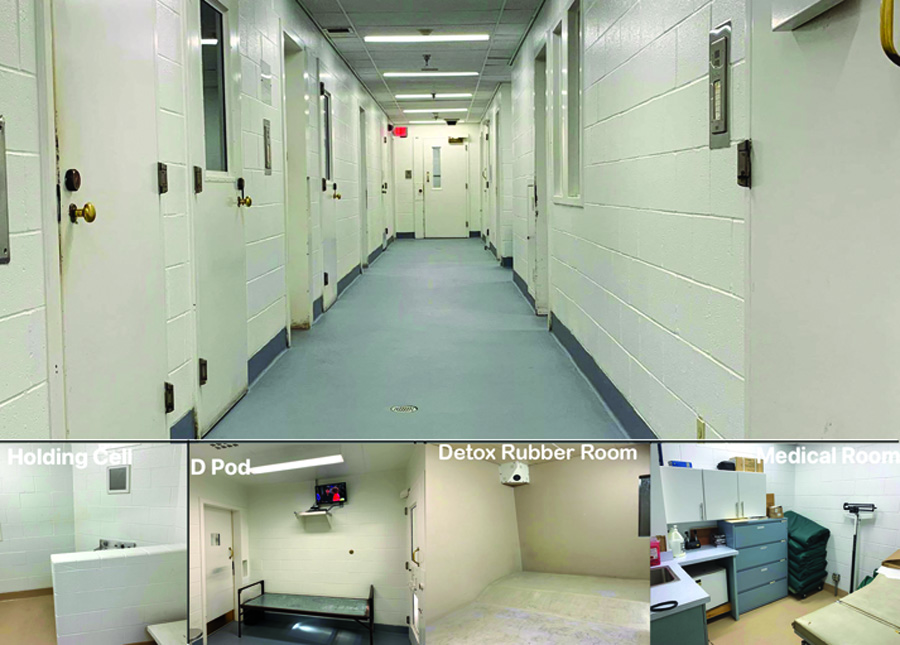Although it’s been months since the initial announcement of the closing of the North Royalton Jail and the turn around that came later, research on the jail feasibility continues. A brief update was presented to City Council at a recent Finance Committee meeting.
Last July, Mayor Larry Antoskiewicz formed the special fact-finding commission to study the workings of the jail and provide the information to City Council. He nominated Matt Stuczynski, a Municipal Advisor who has provided the city with financial information for many years. He also appointed Chris May, Anthony Rohloff, Ward 2 Council Representative Linda Barath and North Royalton Police Department Jail Administrator, Marty Toukonen. The five-person committee was tasked to “read, study and provide the information to Council,” said Antoskiewicz. He said they will provide facts and information, not recommendations.
Jail Task Force Committee member Stuczynski addressed Council, updating them on the committee’s progress, after meeting four or five times. He said, “it is important to point out that we are not a recommending body and no one on this committee attests to a level of expertise or working knowledge of a jail administration, or the administration of a jail to make a recommendation.” He then talked about preliminary observations from conversations with the Police Chief and the Jail Administrator, which included “information that he has brought forth as it relates to questions that the committee has had, trying to better understand the jail facility here in North Royalton and jail operations around Ohio.”
Stuczynski went on to talk about some of the specific preliminary observations. “Clearly, the jail is a very valuable asset of the City of North Royalton. The jail is well maintained and, more importantly, well managed. The jail operations have been fine-tuned to reduce expenses, as well as try to produce revenue to close the gap between revenues and expenses. Like most city services, I’ll point out that jail expenses and the operations of a jail, are largely personnel costs. I suppose that does not come as a surprise. . . not dissimilar to other city services,” he said, noting that it is salary, wages and benefits that comprise the majority of the cost.
Stuczynski said that not only would the jail never be a money-making operation, but, in fact, it probably would never break even. “There seems to be capacity within the jail to accept more prisoners/occupants. However, pricing power and that, of course, means the fees that we charge prisoners/occupants, is a very complicated and highly sensitive model. It is so, largely, due to the number of competing jail facilities operating in northeast Ohio. It is further complicated by a county strategy, and I should be careful here, as to not criticize the county, but a county strategy that doesn’t necessarily sync well with the local government/regional strategy. That seems to be a challenge. We’ve learned, in fact, that there are very few full-service jails in Ohio. Full- service, meaning those jail facilities that accept occupants beyond twelve days.” He said that he and other committee members were extremely surprised when they learned that there are only four of these facilities in Ohio, three of which are located in Cuyahoga County. There are also a number of other facilities in northeast Ohio, which are not full-service. “We see this as limiting the potential pricing power of the North Royalton Jail because there are other options to these other communities.”
He noted that “we see the strategy being conducted likely in two phases: Phase 1 – begin to immediately increase the fee, which Council already has sought to fulfill, to close the revenue gap by increasing revenues; and secondly to increase occupants within the facility by reaching out to neighboring communities, which you’ve already done. The key is to attract more, maintain what you have and continue to fine-tune that process as you think about going forward in 2021, all with the goal of trying to close the gap.”
“We know that this is not a quick turn-around. This is a slow process and you have a lot of partners involved in this and we know that strategy has to be sensitive and diplomatic.” He said that this would be a Phase 1 strategy, as the committee sees it. Phase two would be to explore alternative options. “One being creating a council of governments, with participants being other communities likely, that are willing to enter into a long-term commitment to utilize and optimize the jail facility.” He said that the committee believes that the city should seek consulting services to perform analysis of alternatives to closing the jail and outsourcing prisoner housing. He added that “we know it’s a complicated model where you have to find someone to accept your prisoners and entertain all the costs involved in transporting and housing. . . . We think that might be done likely by the performance audit team of the State Auditor’s office. They’ve done similar studies. The challenge with conducting or engaging them is it takes time to get in their queue. They are more than happy to do the work, but they are filled with a lot of projects.” Stuczynski said that they had suggested an alternative firm that might be considered, although that firm also had a queue of pending projects. In addition, he said that they would probably ask for a scope of services, which has not been prepared at this time. Stuczynski said that it might likely be a 2022 consideration, as a council of governments would take time to find the right participants with the financial wherewithal. “I think it’s important that we continue to look at all options,” adding that even the potential closing, as there are possible complications such as increasing jail restrictions, jail liability escalation, including health matters, workers compensation and occupant profiles. He also added that there is a possibility that increasing fees may be more limited than is currently thought. It is also possible that the county may implement a conflicting strategy. He indicated that currently in Ohio, it is the county that is “the go-to place for these prisoners.” Stuczynski also noted that “sentencing changes, bonding changes that could impact prisoner occupancy,” is another possible complication, among other things. The complications, which can be fluid, could upend any strategies that the city could implement. Stuczynski concluded that they are still collecting the pieces of the puzzle.
“After we went through this whole scenario, one of the things I had said and am committed to is to make the jail work,” said Antoskiewicz. “ I have already had preliminary talks with some other cities as far as possibly doing something with the council of governments. It’s the same/similar thing as we have now that we have our dispatch with. . . it’s a regional approach. I have had some talks with other cities already. Those talks have been very positive. I think that there’s a strong feeling from those communities that they would like to entertain that and talk more about it, so at this point I’m gathering more information.” Antoskiewicz said that he will then go back to discuss with those interested and see if they can “get to the point where we want to be, which is still operate a full-service jail, lower our expenses and increase our revenues to make it much more affordable for the city.”
By GLORIA PLEVA KACIK
Contributing Writer
Research on jail feasibility continues
Royalton Recorder Research on jail feasibility continuesJan 12, 2021






